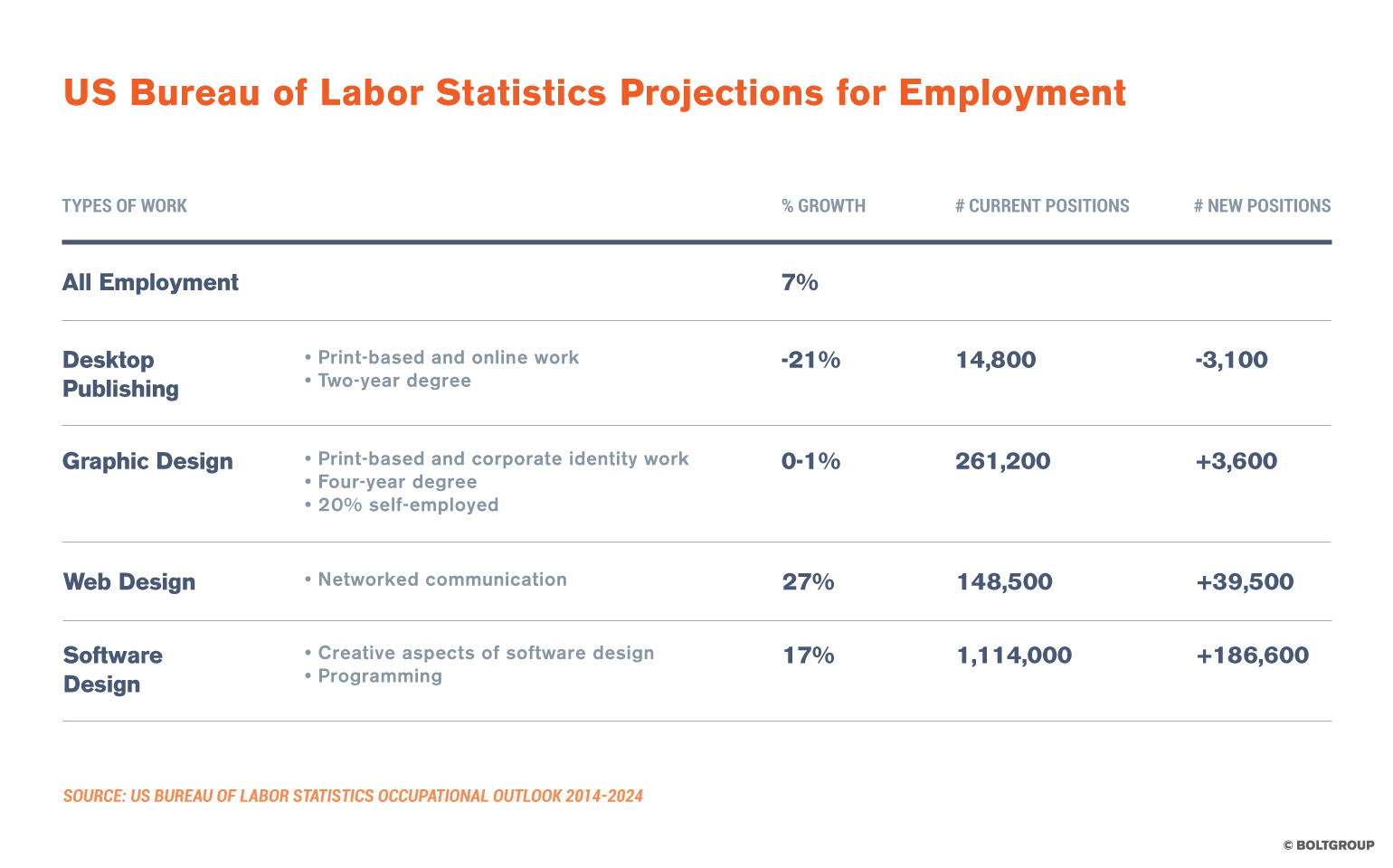Another interesting point: As of 2016, 80% of all work in the US was in service industries. Everything seems heading towards service-based or finding a way to be of greater service. Anything can become a service in today’s marketplace, often accessed through self-service technological systems. Even branding professionals must reconsider the wisdom of traditional business strategies that make physical products in a traditional environment.
Designers can now use technology to observe the interactions of people and employ user-centric approaches. Creating the conditions for authentic user experiences in our technology-driven world requires working with people rather than for people. Planning, facilitation, and research are fast becoming absolutely essential design skills. And because design problems are increasingly complex and subject to rapid change across interdependent elements, work at this level requires interdisciplinary collaboration and continuous updating. Traditional design craft and print production are no longer essential skills for designing tools, systems, and strategies. It’s all focused on, and driven by, people.
7 Design Practice Trends
1 Complex Problems—Because today’s world is made up of interdependent systems and communities, change in one area affects other areas. Design must manage that complexity and maintain user experience as paramount. Work at this level requires interdisciplinary collaboration and continuous updating to ensure the best possible outcomes.
2 Aggregation and Curation—Increasing message fragmentation and loss of message control challenges traditional approaches. Branding and communication strategies must shift to anticipate the fragmentation and repurposing of messages.
3 Bridging Digital and Physical Experiences—This is one I’ve talked about a lot lately. Nearly 80% of American workers are in the service industry, and 70% of consumers prefer an online, self-service option when engaging with businesses and organizations. Consumers typically visit multiple channels before completing purchases (social, web, retail, customer service chat). If retailers can translate physical products and activities into service opportunities, and if they can meet a customer with service first, on every brand application, they will be more successful.
4 Core Values Matter—People care. Isn’t that actually so lovely? Consumers favor and develop long-term relationships with businesses and organizations that share their values. They no longer want hard sell or cleverness in communications. Authenticity and transparency are key. Organizations must know their brand foundation and see that their values are evidenced out in every touchpoint.
5 Resilient Organizations—Resilience requires change and innovation. Most businesses believe in innovation generally, but we’re talking about brand innovation. Designers can influence the innovation of internal business systems, products and offerings, and consumer experiences. Nothing is more important than the customer experience, and the journey they travel with your brand. It must be well-defined and consistently on-brand at every touchpoint.
6 Making Sense in the Data Economy—Big brother, indeed. Smart, connected products are transforming competition in today’s business and also creating entirely new industries. They collect data about the environment, users, and usage. The best systems adapt and learn from the user’s behavior. Designers and brands must think in terms of adaptive technological systems that learn and evolve. Fixed features and functions are the past, and design solutions that use prototyping artificial intelligence are the future.
7 Accountability for Anticipating Design Outcomes—In an age of metrics, designers are responsible for outcomes of their work. They must employ data-driven technology to assess user experience, and also master practical methods to assess user / audience needs and incorporate them into the service offerings. Brands must perform due diligence to determine how outcomes can be measured and understand all the metrics for measuring design used in business.
So, while 2025 might sound like a long way off, it’s just seven years from today. The AIGA’s seven design practice trends paint an exciting picture of a future that’s already emerging. Along with that comes challenges in making the shifts needed to stay connected with a changing landscape. Designers who embrace these challenges and businesses, and brands that seek success, will embrace a primary focus on user-centric branding.
If you want to see the full survey from AIGA, please email [email protected].

